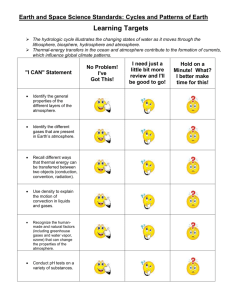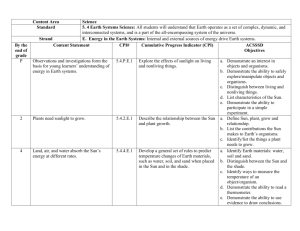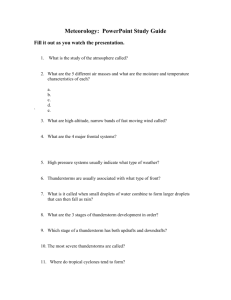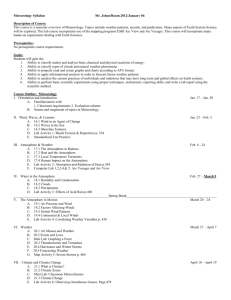CHAPTER IN PERSPECTIVE
advertisement
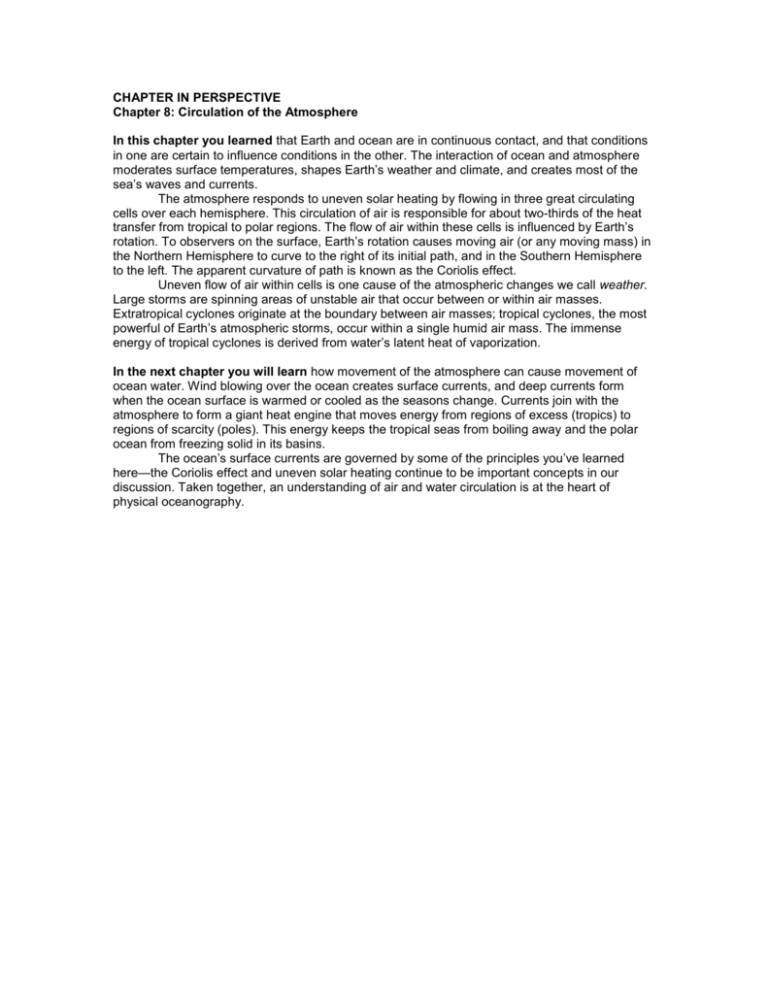
CHAPTER IN PERSPECTIVE Chapter 8: Circulation of the Atmosphere In this chapter you learned that Earth and ocean are in continuous contact, and that conditions in one are certain to influence conditions in the other. The interaction of ocean and atmosphere moderates surface temperatures, shapes Earth’s weather and climate, and creates most of the sea’s waves and currents. The atmosphere responds to uneven solar heating by flowing in three great circulating cells over each hemisphere. This circulation of air is responsible for about two-thirds of the heat transfer from tropical to polar regions. The flow of air within these cells is influenced by Earth’s rotation. To observers on the surface, Earth’s rotation causes moving air (or any moving mass) in the Northern Hemisphere to curve to the right of its initial path, and in the Southern Hemisphere to the left. The apparent curvature of path is known as the Coriolis effect. Uneven flow of air within cells is one cause of the atmospheric changes we call weather. Large storms are spinning areas of unstable air that occur between or within air masses. Extratropical cyclones originate at the boundary between air masses; tropical cyclones, the most powerful of Earth’s atmospheric storms, occur within a single humid air mass. The immense energy of tropical cyclones is derived from water’s latent heat of vaporization. In the next chapter you will learn how movement of the atmosphere can cause movement of ocean water. Wind blowing over the ocean creates surface currents, and deep currents form when the ocean surface is warmed or cooled as the seasons change. Currents join with the atmosphere to form a giant heat engine that moves energy from regions of excess (tropics) to regions of scarcity (poles). This energy keeps the tropical seas from boiling away and the polar ocean from freezing solid in its basins. The ocean’s surface currents are governed by some of the principles you’ve learned here—the Coriolis effect and uneven solar heating continue to be important concepts in our discussion. Taken together, an understanding of air and water circulation is at the heart of physical oceanography.


